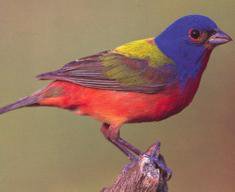Bird Flu - European Commission earmarks €30 million for Asia
 Concerns about avian influenza and the threat of a pandemic have to be tackled not only within the EU, but by helping countries at risk to control this disease at its source. The European Commission has earmarked up to €30 million to assist Asian partners face up to this challenge in 2006. The allocation of the money will be decided as soon as there has been an international evaluation of medium and long term needs. The forthcoming international Partners meeting on Avian and Human Pandemic Influenza in Geneva (7-9 November) will provide an important opportunity to assess and identify what international financial assistance is required to support country and regional plans, particularly in Asia. The Commissioner for External Relations and European Neighbourhood Policy, Benita Ferrero-Waldner said: “There are concrete actions we can take to increase preparedness and avert the threat of a pandemic. These must be treated as a priority in the coming months. The Commission stands ready to provide assistance, particularly to least developed countries in Asia to support their medium term strategies for tackling this growing problem.”The recurrence of bird flu in Asia over the last three years and its rapid expansion to other regions in the world makes it necessary to develop a long term external response strategy.The Commission’s external response aims at providing assistance, particularly to least developed countries, in support of their medium and long term plans, addressing structural problems such as reinforcing veterinary and public health services to cope with detection, prevention and containment of avian influenza and also other zoönosis. The Commission’s external response is to be seen in the context of the global strategy prepared by the FAO (Food and Agriculture Organisation) and the OiE (Office international des epizooties) to control and eradicate the avian influenza in the animal population as well as of the strategy developed by the WHO (World Health Organisation) to protect humans from a transmission of the virus and reduce the risk of a pandemic situation.
Concerns about avian influenza and the threat of a pandemic have to be tackled not only within the EU, but by helping countries at risk to control this disease at its source. The European Commission has earmarked up to €30 million to assist Asian partners face up to this challenge in 2006. The allocation of the money will be decided as soon as there has been an international evaluation of medium and long term needs. The forthcoming international Partners meeting on Avian and Human Pandemic Influenza in Geneva (7-9 November) will provide an important opportunity to assess and identify what international financial assistance is required to support country and regional plans, particularly in Asia. The Commissioner for External Relations and European Neighbourhood Policy, Benita Ferrero-Waldner said: “There are concrete actions we can take to increase preparedness and avert the threat of a pandemic. These must be treated as a priority in the coming months. The Commission stands ready to provide assistance, particularly to least developed countries in Asia to support their medium term strategies for tackling this growing problem.”The recurrence of bird flu in Asia over the last three years and its rapid expansion to other regions in the world makes it necessary to develop a long term external response strategy.The Commission’s external response aims at providing assistance, particularly to least developed countries, in support of their medium and long term plans, addressing structural problems such as reinforcing veterinary and public health services to cope with detection, prevention and containment of avian influenza and also other zoönosis. The Commission’s external response is to be seen in the context of the global strategy prepared by the FAO (Food and Agriculture Organisation) and the OiE (Office international des epizooties) to control and eradicate the avian influenza in the animal population as well as of the strategy developed by the WHO (World Health Organisation) to protect humans from a transmission of the virus and reduce the risk of a pandemic situation. 
<< Home